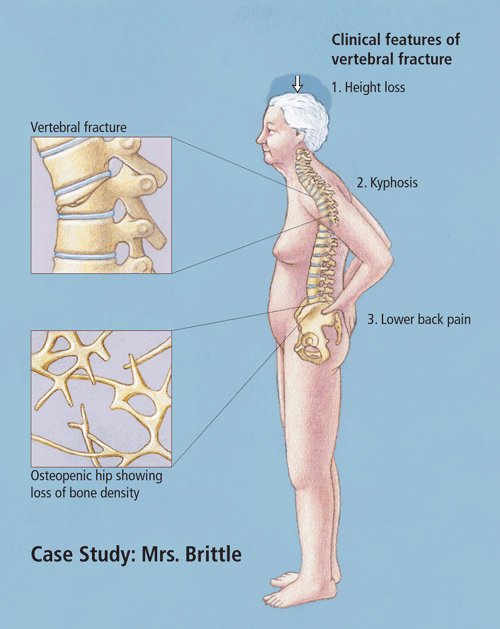Chui Kin Yuen, MD, FRCSC, FACOG, FSOGC, MBA, Chairman, Manitoba Clinic, Winnipeg, MB.
Current History
Mrs. Brittle Bone presents to your office because of low back pain of insidious onset in the past three weeks. Mrs. Brittle is a healthy 68 year old female and is an active gardener. Following the death of her husband one year ago, she continued to live in her house and has done many of the household chores, including gardening. Her pain began three weeks ago and, since then, she has found it difficult to do her household work. She is not able to rest peacefully at night because of the discomfort.

Family History
She has no family history of osteoporosis. However, her mother was diagnosed with breast cancer at 55 years old.
Lifestyle Habits & Medications
Mrs. Brittle Bone is a healthy non-smoker with adequate nutrition and regular exercise. She drinks occasionally. She takes calcium and vitamin D supplements every day. She is not on any medications and has never been on Hormone Replacement Therapy.
Physical Examination
Physical examination of the spine demonstrates that she has mild kyphosis. Her range of motion is limited and the pain is exacerbated with extension and rotation. Percussion of the spine reveals point tenderness at L2.